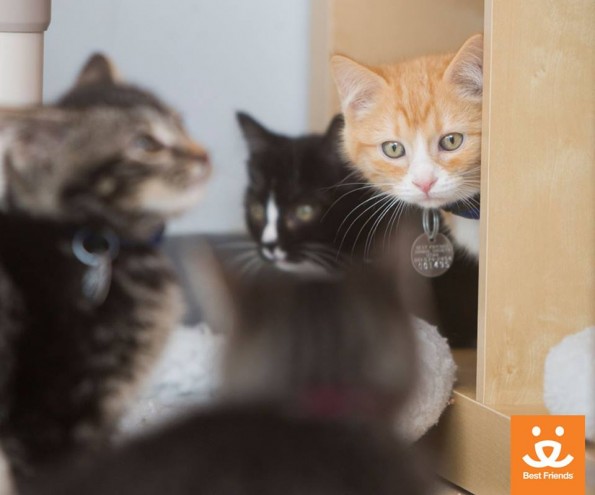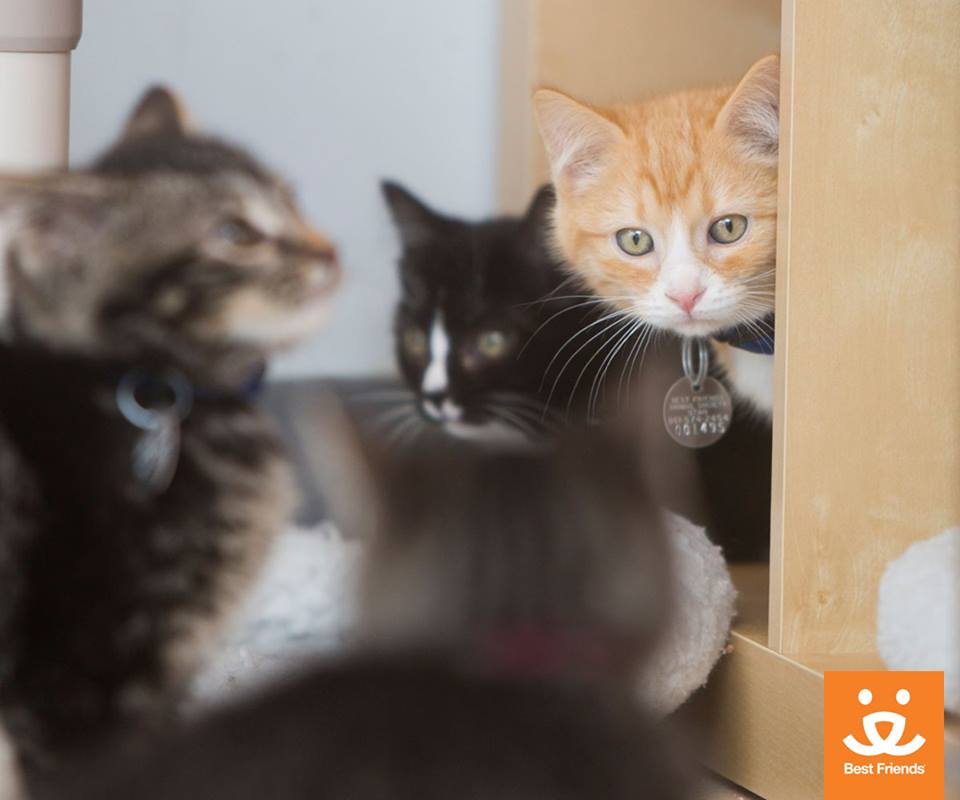 Here, Kitty, Kitty: TNR Provides TLC
Here, Kitty, Kitty: TNR Provides TLC
“Feline nuisance control” is a not-so-secret code for cat killing. In the animal control model, ownerless cats are captured, held for an obligatory five days, and if no one claims or adopts them, they are euthanized–a gentle-sounding euphemism for killing. 70 percent of animals killed in Utah shelters last year were cats. But a new breed of animal welfare advocates has been steadily and successfully changing the philosophy, legislation and response to the natural fact of autonomous outdoor cats.
Stray, feral. wild. These are the words most often associated with what Best Friends Animal Sanctuary calls “community cats.” “These are cats that live outdoors and have no visible signs of ownership,” says Best Friends Executive Director Arlyn Bradshaw. And “ownership” is the operative word in an outdoor cat’s fate. “Pets are property,” Arlyn explains, so a “stray” may belong to someone. In fact, harboring a stray is illegal, and one function of animal shelters is to act as an intermediary between lost and found pets.
However, the reality is that there is a large population of cats which are not aligned with an owner. “You know that saying, ‘breed like rabbits’?” asks Ashley Farmer, spay and neuter services manager for Best Friends. “Well, it should be ‘breed like cats.’” She explains that community cat populations increase exponentially. Cats, by nature, colonize, and those colonies–as many as 30 cats–can cause the feline equivalent of disorderly conduct in human communities.
In concert with the Best Friends ‘No Kill Utah’ initiative, the non-profit offers a program through which community cats are trapped, spayed or neutered, vaccinated, ear-tipped, and then returned to their colony. Yes, returned. “Eradicating cats in an area,” Arlyn points out, “creates a vacuum effect. There’s a reason why cats are there in the first place. The resource is still there, so other cats will move in because of the resource. The community cat TNR (trap, neuter, return) program recognizes that reality.”
The Utah State Community Cat Act, passed in 2011, acknowledges and sanctions this new way to manage free-roaming cats. Part of the act allows participating municipalities to ignore the five-day hold for TNR cats.
This entirely donor-driven program is comprehensive and thorough. Individuals may contact Best Friends for humane trapping guidelines and procedures, or call the organization’s community cat team to pick up a feline for TNR.
Trapping is a middle-of-the-night activity, because that’s when community cats are most active. Ashley notes, “Cats are clever. You pretty much have only one chance to get them.” Humane traps (an inhumane trap would be a cardboard box or laundry basket) are baited, and captured felines are then transported to one of 50 statewide participating veterinaryians who spay, neuter and vaccinate the animal. While under anesthesia, a quarter-inch tip of the cat’s left ear is removed so the cat can be visually identified as a fixed and treated feline.
A TNR program reduces shelter costs and kill rate and is a humane, balance-of-nature option. Sterilized cats cannot breed, and spaying or neutering often mitigates or eliminates problematic or annoying behavior. Utah counties and municipalities are increasingly participating in this win-win system. The West Valley City-Taylorsville Animal Shelter and Services recently joined the list of Utah’s no-kill shelters.
“We shouldn’t punish the cats,” Arlyn contends. “Often, community cats are there because of human irresponsibility. They’re there because of us. Please,” he adds, “get your cats spayed or neutered.”
Best Friends Animal Society Commuunity Cat information, 801-574-2445
http://utah.bestfriends.org/our-programs/communitycats






